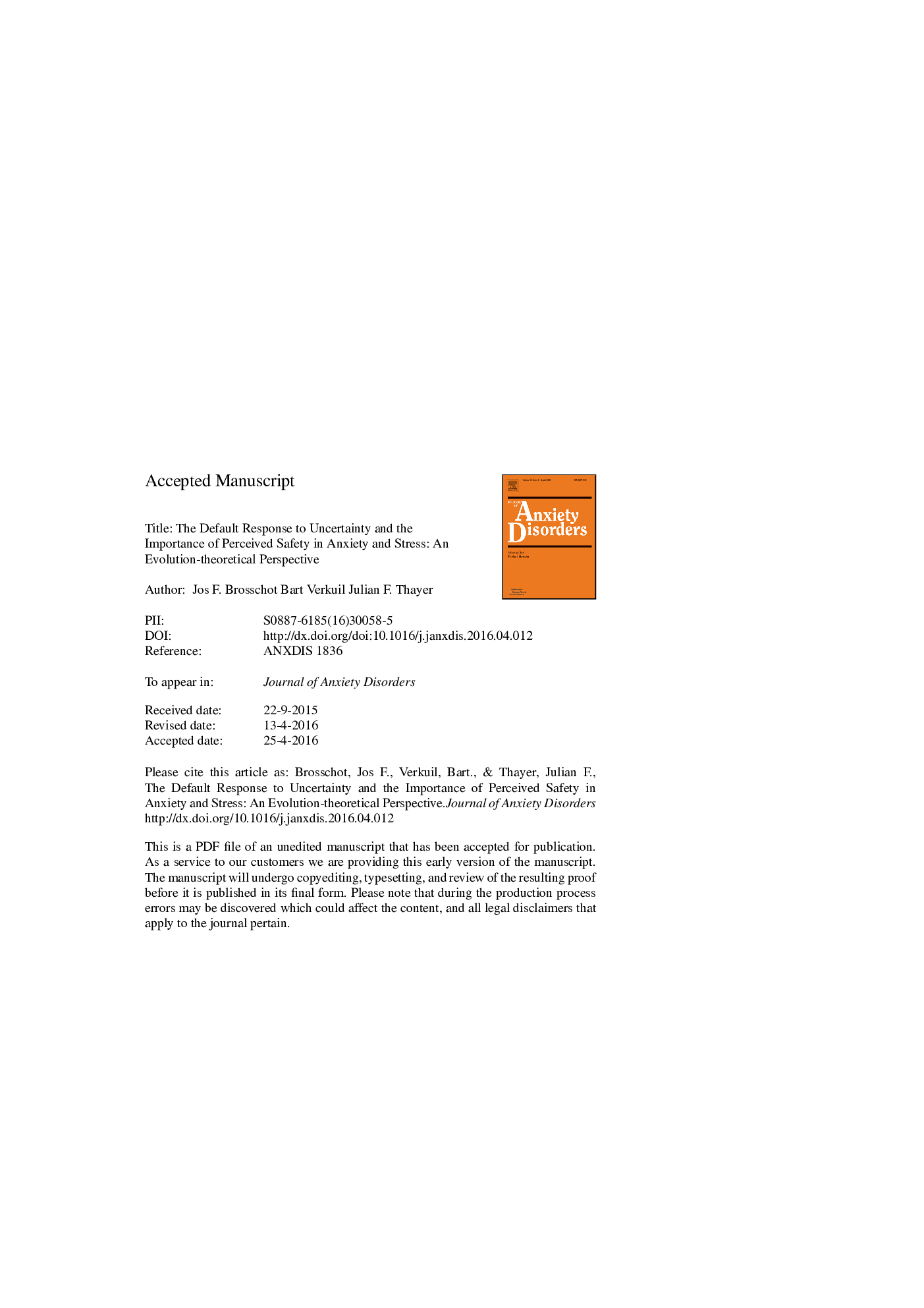| Article ID | Journal | Published Year | Pages | File Type |
|---|---|---|---|---|
| 7267092 | Journal of Anxiety Disorders | 2016 | 47 Pages |
Abstract
From a combined neurobiological and evolution-theoretical perspective, the stress response is a subcortically subserved response to uncertainty that is not 'generated' but 'default': the stress response is 'always there' but as long as safety is perceived, the stress response is under tonic prefrontal inhibition, reflected by high vagally mediated heart rate variability. Uncertainty of safety leads to disinhibiting the default stress response, even in the absence of threat. Due to the stress response's survival value, this 'erring on the side of caution' is passed to us via our genes. Thus, intolerance of uncertainty is not acquired during the life cycle, but is a given property of all living organisms, only to be alleviated in situations of which the safety is learned. When the latter is deficient, generalized unsafety ensues, which underlies chronic anxiety and stress and their somatic health risks, as well as other highly prevalent conditions carrying such risks, including loneliness, obesity, aerobic unfitness and old age.
Related Topics
Health Sciences
Medicine and Dentistry
Psychiatry and Mental Health
Authors
Jos F. Brosschot, Bart Verkuil, Julian F. Thayer,
